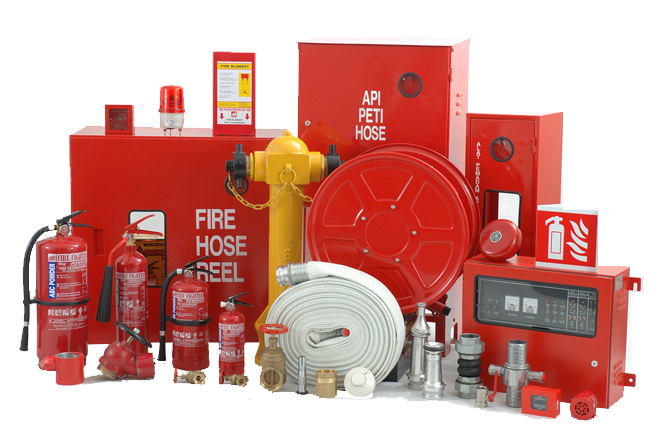Knowing the basic fire fighting equipment list and understanding how each item works is crucial for minimizing risk and responding effectively in emergencies.
Whether you’re stocking a facility, outfitting a ship, or ensuring compliance with fire safety codes in Singapore, having the right tools in place can save lives and protect property.
Basic Fire Fighting Equipment List

A basic fire fighting system refers to the integrated network of equipment and protocols designed to detect, alert, and suppress fires.
These systems are essential components of any building or facility’s safety strategy.
Core components include:
- Detection: Smoke and heat sensors
- Alarm: Sirens and visual alerts
- Suppression: Fire extinguishers, sprinklers, hose reels
- Evacuation: Exit signs, emergency lighting, and evacuation maps
Together, these create a layered defense that ensures fire threats are quickly identified and suppressed before they escalate.
The basic fire fighting equipment list typically includes the following:
- Fire Extinguishers: These are categorized by the type of fire they combat (A, B, C, D, and K). A CO2 or dry chemical extinguisher is common in most settings.
- Fire Hose Reels: Found in larger buildings, these provide a continuous water source and are ideal for Class A fires.
- Fire Buckets: Simple but effective, these are typically filled with sand or water.
- Fire Blankets: Useful for smothering small fires or wrapping around people whose clothes have caught fire.
- Emergency Fire Alarms: Audible alarms that signal the presence of smoke or fire.
- Smoke Detectors and Heat Sensors: Crucial for early warning, especially in sleeping quarters and enclosed areas.
Modern Fire Fighting Equipments
As fire threats evolve, so do the tools used to fight them. While the basic fire fighting equipment list lays the foundation, modern fire fighting equipment adds advanced layers of safety and efficiency.
Examples of modern fire fighting equipments include:
- Automated Fire Suppression Systems: These activate without human intervention, common in data centers and industrial facilities.
- Thermal Imaging Cameras: Used to detect people or hot spots through smoke or darkness.
- Firefighting Drones: Deployed to assess situations from above and deliver retardants.
- Water Mist Systems: Use fine droplets to cool and suffocate flames without causing water damage.
- Foam-Based Suppression Systems: Ideal for flammable liquid fires (Class B).
Modern fire fighting gear isn’t just high-tech, it’s about faster detection, safer extinguishing, and better protection for both people and property.
Fire Fighting Equipment Onboard Ship
Maritime fire risks are unique due to confined spaces and flammable materials. Hence, the fire fighting equipment onboard ship must meet SOLAS (Safety of Life at Sea) requirements.
Typical shipboard fire equipment includes:
- Portable fire extinguishers for every compartment
- Fixed fire suppression systems (CO2, foam)
- Fireman’s outfits and breathing apparatus
- Fire pumps and hydrant systems
Routine training and drills are mandatory, ensuring all crew members are prepared to act immediately during a fire emergency.
Trusted Fire Fighting Equipment Suppliers in Singapore
With many vendors in the market, selecting fire fighting equipment suppliers in Singapore demands scrutiny. Look for suppliers who:
- Are certified by the SCDF
- Offer installation, maintenance, and inspection services
- Provide a comprehensive range of both basic and modern fire fighting equipment
- Have a track record of serving similar industries (e.g., marine, construction, commercial real estate)
SGB Resources is your trusted expert in fire safety. With over 25 years of experience, we have successfully supported clients across various industry backgrounds.
We provide a complete range of basic and modern fire fighting equipment, custom system design, and full-service support, all tailored to your unique needs.
Contact us today to speak with a fire safety specialist. Don’t wait until it’s too late.
